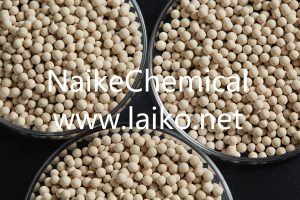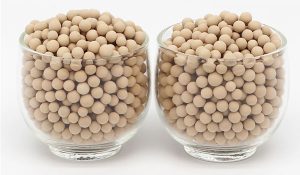Applications of Molecular Sieve
Molecular Sieve For Natural Gas Drying
Natural gas is a very popular source of fuel, it is a hydrocarbon gas consisting mainly of methane or CH₄ and a few other hydrocarbons in smaller quantities. Currently, natural gas is one of the most common energy fuels we use. Drying natural gas is an important matter as water or other impurities in natural gas can increase the risk of damage to pipelines through corrosion or hydrate formation.
Natural gas containing water vapour and contaminants can be efficiently passed through molecular sieve columns. With the help of the high adsorption capacity, water is removed from the gas stream to a low concentration. Depending on the type of sorbent used for the natural gas drying process, this sorbent can be effectively regenerated at a specific temperature. Molecular sieves are considered to be the most effective desiccants and adsorbents for drying natural gas with suitable molecules of critical pore size.
The drying process using 3A, 4A, and 5A solid desiccant materials is based on the molecular size, pore size, and polarity of the gas stream. They differ slightly in terms of gas flow rate and water vapour concentration depending on their respective pore size. 3A, 4A, and 5A can be used as active adsorbents for natural gas in bead and pellet form to achieve very low dew points of -100°C. They are suitable for the dehydration of natural gas containing aromatic compounds such as methane, ethane, propane, etc. In most cases, VPS technology is used based on the molecular sieve type. It helps to obtain maximum efficiency. A larger pore size means a higher adsorption capacity. In this case, the 5A molecule has the greatest adsorption or dehydration capacity compared to 4A and 3A. Similarly, 3A molecules have the greatest adsorption of water and the least adsorption of other compounds present in natural gas.


Molecular Sieve For Ethanol Dehydration
Molecular sieves can be used as effective absorbents for gases and liquids. Activated molecular sieves with a unique structure help some systems to remove unwanted gas or liquid impurities to a large extent. It can also split gases or liquids in molecular size. Molecular sieves play a huge role in the distillation of ethanol above the azeotropic point of 95.6% by volume. Now, with the help of synthetic molecular sieves, ethanol dehydration processes can be carried out efficiently above this azeotropic point using advanced technology.
The molecular sieve dehydration process requires a high level of purity in the range of industrial and food applications. type 3A molecular sieves are considered to be the most efficient type for drying ethanol. During the dehydration of ethanol, the hydrated ethanol vapour passes through a bed of molecular sieves. As the vapour passes through the sieve bed, in the first step, water is absorbed by the pores of the adsorbent structure. The adsorption process continues until the possible adsorption of water from these vapours is complete or the molecular sieve is saturated.
The transfer of water from the hydrated ethanol vapour to the activated molecular sieve occurs through a zone in which the water content is reduced in concentration from its inlet to its outlet. This main transfer zone provides one active bed for transporting the dehydrated water, while the other bed is used for regeneration. The movement from one bed to the other is handled and controlled by powerful valves and automation. Pure ethanol after dehydration using molecular sieves can be used as motor fuel and for other useful applications.




